Aloe Vera (Aloe barbadensis miller) is one of the most popular and beneficial succulents grown worldwide, prized for its medicinal, cosmetic, and culinary uses. Known for its thick, fleshy leaves filled with a soothing gel, Aloe Vera has been used for centuries for skin care, minor burns, and digestion support. But a common question among gardeners and plant enthusiasts is: how old should an Aloe Vera plant be before you start harvesting its leaves?
This article will offer a detailed, evidence-based guide on the ideal age for harvesting Aloe Vera leaves, factors influencing leaf maturity, harvesting techniques, signs your plant is ready, and care tips for maintaining a productive, healthy plant.
Understanding Aloe Vera’s Growth Cycle
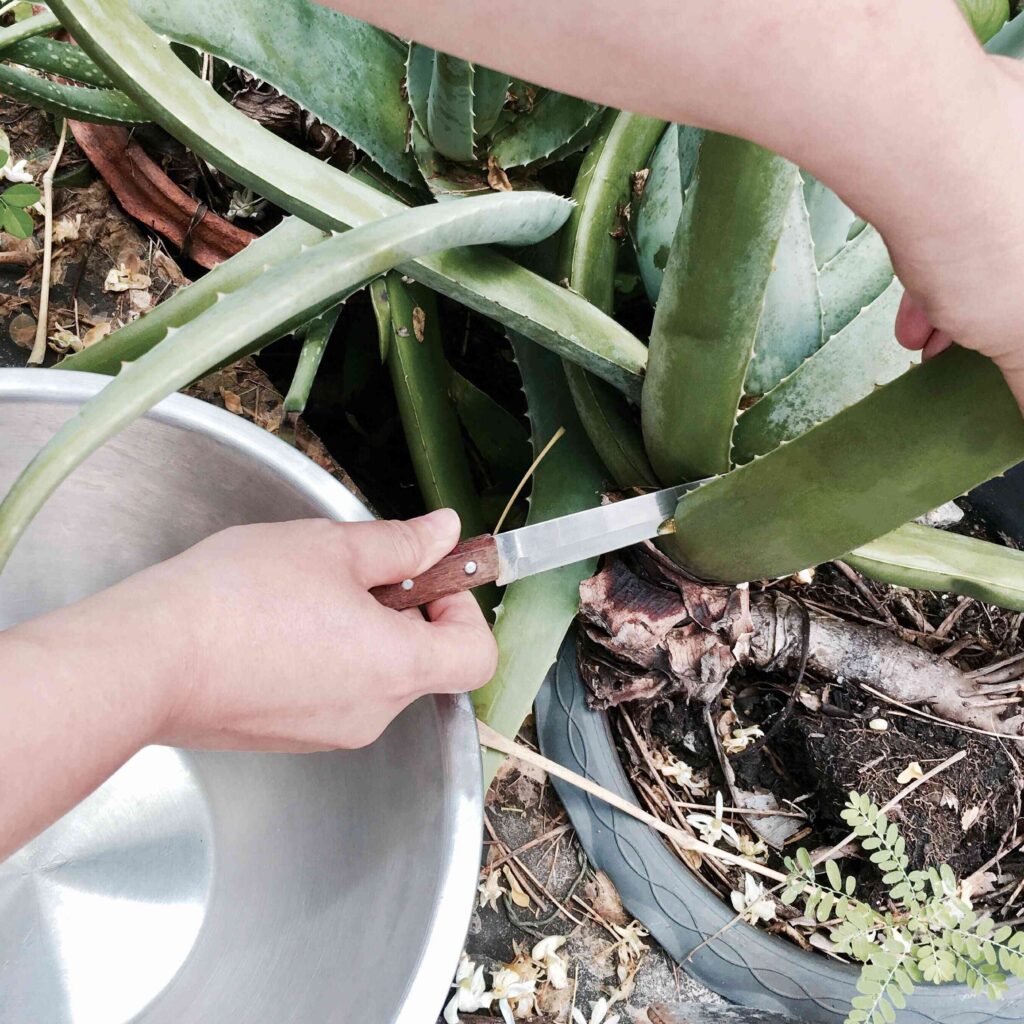
Before determining the right time for harvesting, it’s essential to understand how Aloe Vera grows. As a perennial succulent native to arid regions of the Arabian Peninsula and North Africa, Aloe Vera thrives in hot, dry climates with well-draining soil.
A typical Aloe Vera plant goes through these stages:
- Seedling Stage (0–6 months): Small, tender leaves emerge; the plant focuses on root development.
- Juvenile Stage (6 months–1 year): Leaves thicken and increase in number; however, they’re still not fully mature.
- Mature Stage (1–3 years): The plant produces large, fleshy leaves with high gel content, suitable for harvest.
- Fully Mature Stage (3+ years): The plant reaches maximum leaf size and productivity, yielding nutrient-rich gel.
How Old Should an Aloe Vera Be to Harvest Leaves?
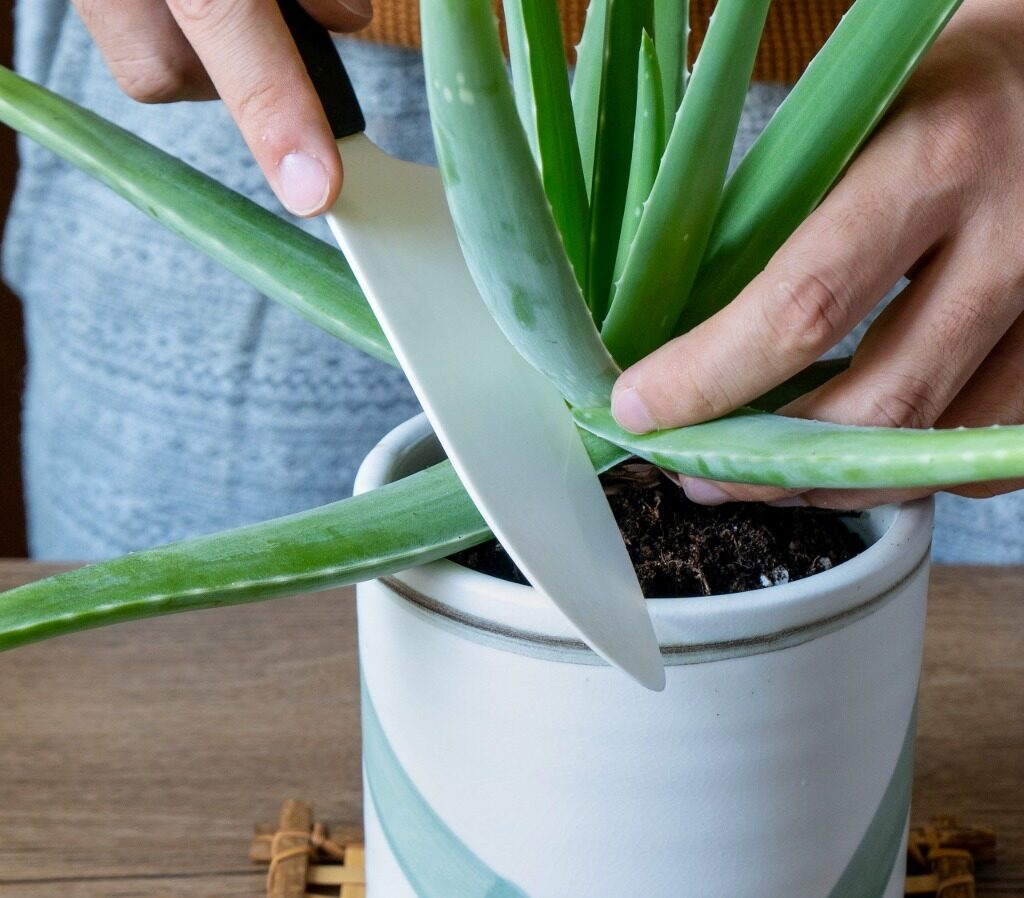
In general, Aloe Vera plants should be at least 2 to 3 years old before harvesting leaves. At this age, the leaves have reached their optimal thickness, length, and gel quality. Young plants under two years often have thin, underdeveloped leaves with less gel content and weaker medicinal properties.
Why Wait for 2–3 Years?
- Gel potency increases with age.
- Leaves grow thicker and juicier over time.
- Harvesting too early can stunt plant development.
- Mature leaves regenerate better post-harvest.
In commercial aloe cultivation, farms typically wait 3–4 years for maximum leaf size and gel production.
Factors That Influence Aloe Vera’s Maturity
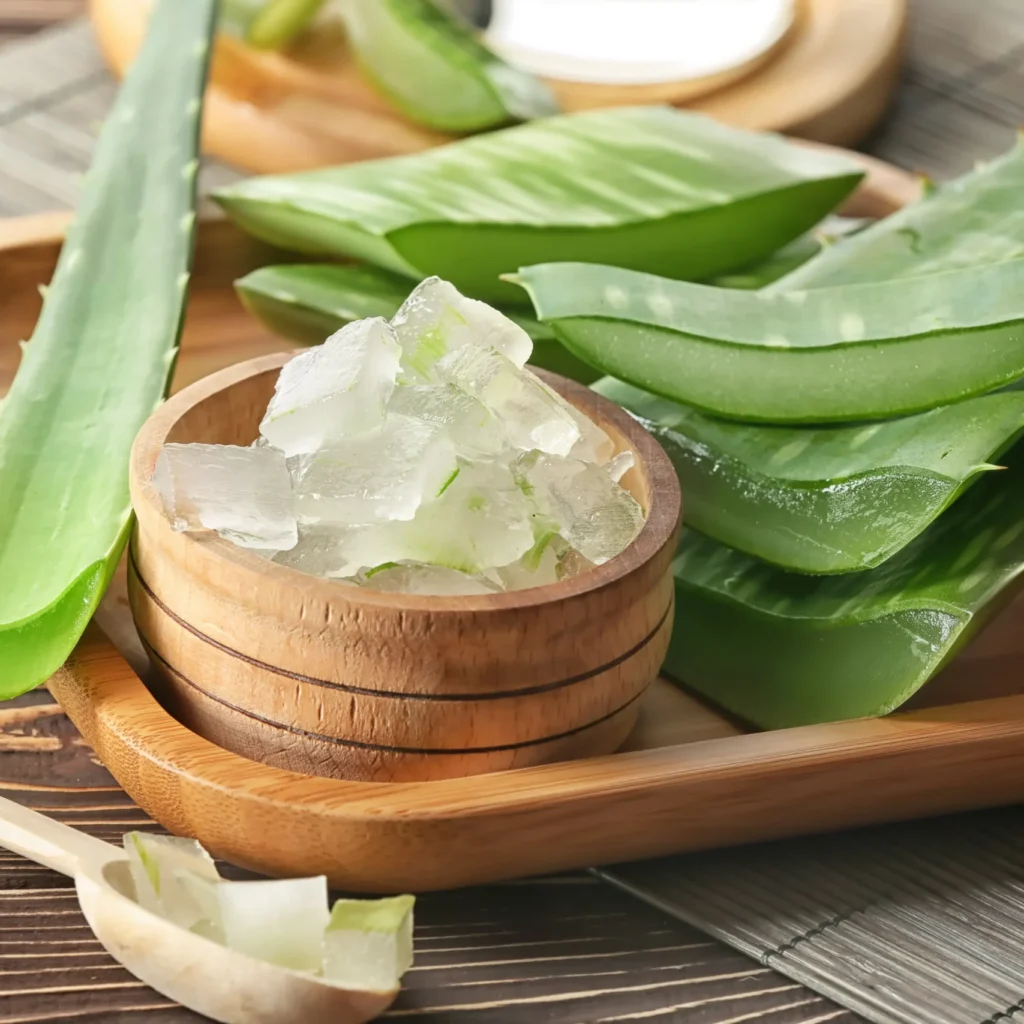
Several conditions can affect how quickly an Aloe Vera plant reaches harvestable maturity:
1. Growing Environment
- Sunlight: Aloe Vera needs 6–8 hours of bright, indirect sunlight daily. Insufficient light slows growth.
- Temperature: Thrives in 60°F–85°F (15°C–29°C). Cold weather delays growth and leaf thickening.
- Air Circulation: Good airflow prevents fungal issues that can stunt growth.
2. Soil and Drainage
- Well-draining, sandy or cactus potting mix ensures healthy roots and steady leaf growth.
3. Watering Practices
- Water thoroughly but infrequently, allowing the soil to dry out between waterings. Overwatering slows growth and causes root rot.
4. Container Size
- Pot-bound plants with limited root space grow slower. Repotting every 1–2 years encourages healthy leaf development.
5. Nutrient Supply
- Monthly feeding with a diluted cactus fertilizer during the growing season boosts plant growth and leaf size.
Signs Your Aloe Vera Is Ready for Harvest
Apart from age, several visual and physical signs can help determine if your Aloe Vera leaves are ready for harvesting:
- Thick, fleshy leaves with a firm feel.
- Leaves should be at least 8 inches (20 cm) long.
- Older, outer leaves at the plant’s base are ideal.
- Leaves should have a healthy green to bluish-green color.
- The plant has a stable root system with visible offsets (baby plants).
If your plant meets these conditions, it’s ready for careful harvesting.
How to Harvest Aloe Vera Leaves Safely
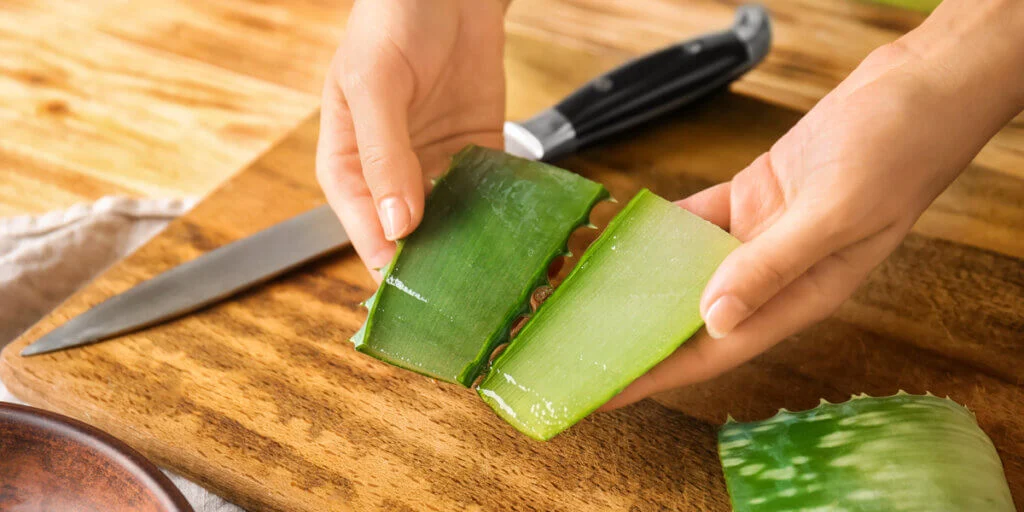
Harvesting Aloe Vera leaves requires gentle handling to avoid damaging the plant. Here’s a step-by-step guide:
Materials Needed:
- Clean, sharp knife or pruning shears.
- Clean cloth or paper towels.
Step-by-Step Process:
- Select mature outer leaves — pick the thickest, bottom-most leaves near the base.
- Cut close to the stem — use a sharp knife or pruning shears to make a clean cut.
- Leave at least 3–5 leaves on the plant to maintain health.
- Wipe off any yellow sap (aloin) from the cut end. Aloin can be irritating to skin and has a bitter taste.
- Use the gel immediately or store it in an airtight container in the refrigerator for up to a week.
How Often Can You Harvest Aloe Vera?
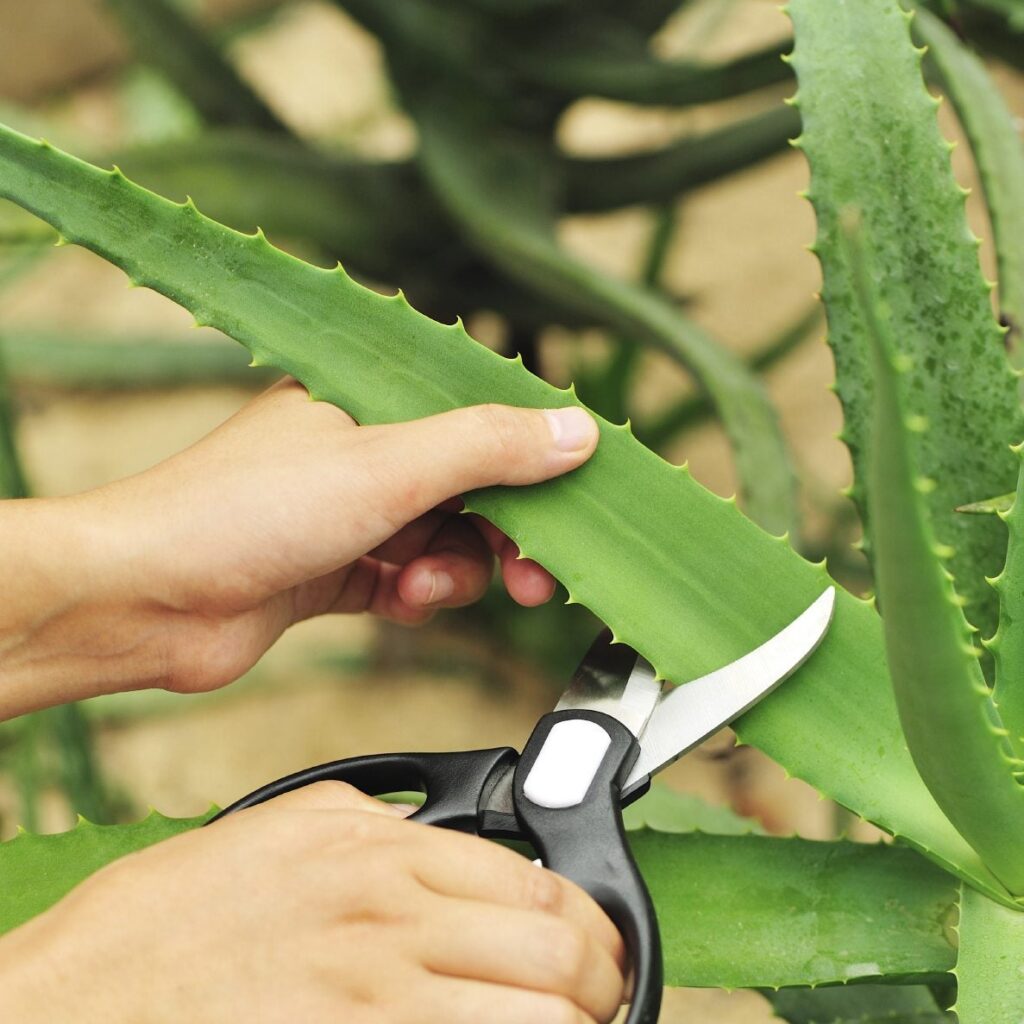
A healthy, mature Aloe Vera plant can be harvested once every 6–8 weeks, depending on leaf regrowth and overall plant health. Avoid harvesting too many leaves at once — taking 1–2 mature leaves each harvest session allows the plant to recover.
Tip: If your plant produces offsets (pups), remove and replant them to propagate new Aloe Vera plants.
Common Mistakes to Avoid
When harvesting Aloe Vera leaves, avoid these frequent mistakes:
- Harvesting immature leaves — thin, young leaves contain less gel and can hinder plant growth.
- Overharvesting — removing too many leaves weakens the plant.
- Using dull cutting tools — jagged cuts invite infection.
- Not allowing leaves to seal naturally — avoid water exposure at the cut site to prevent rot.
Can You Harvest Leaves from a Younger Plant?
It’s not recommended to harvest leaves from Aloe Vera plants under 1.5 years old. At this stage:
- The leaves are small and gel-deficient.
- The plant is focusing on root and structural development.
- Early harvesting stresses young plants, slowing overall growth.
If absolutely necessary for minor use (like a single drop for a burn), only cut a small section from a mature-looking outer leaf.
Benefits of Harvesting at the Right Age
Allowing your Aloe Vera to mature before harvesting ensures:
- Maximum gel yield.
- Better gel quality with higher concentrations of beneficial compounds such as aloin, acemannan, vitamins, and minerals.
- Longer plant lifespan due to reduced stress.
- Stronger, more resilient plant growth.
Conclusion
In summary, an Aloe Vera plant should be at least 2 to 3 years old before harvesting its leaves. This ensures the leaves are thick, nutrient-rich, and contain a generous amount of high-quality gel. Factors like sunlight, watering habits, pot size, and soil conditions play crucial roles in how quickly a plant matures.
Proper harvesting technique, regular care, and patience will reward you with a thriving Aloe Vera plant capable of providing fresh, medicinal gel for years. Whether you’re growing Aloe Vera for skincare, natural remedies, or decorative appeal, understanding its growth cycle and harvesting practices is essential for long-term success.



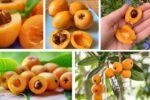
Leave A Comment